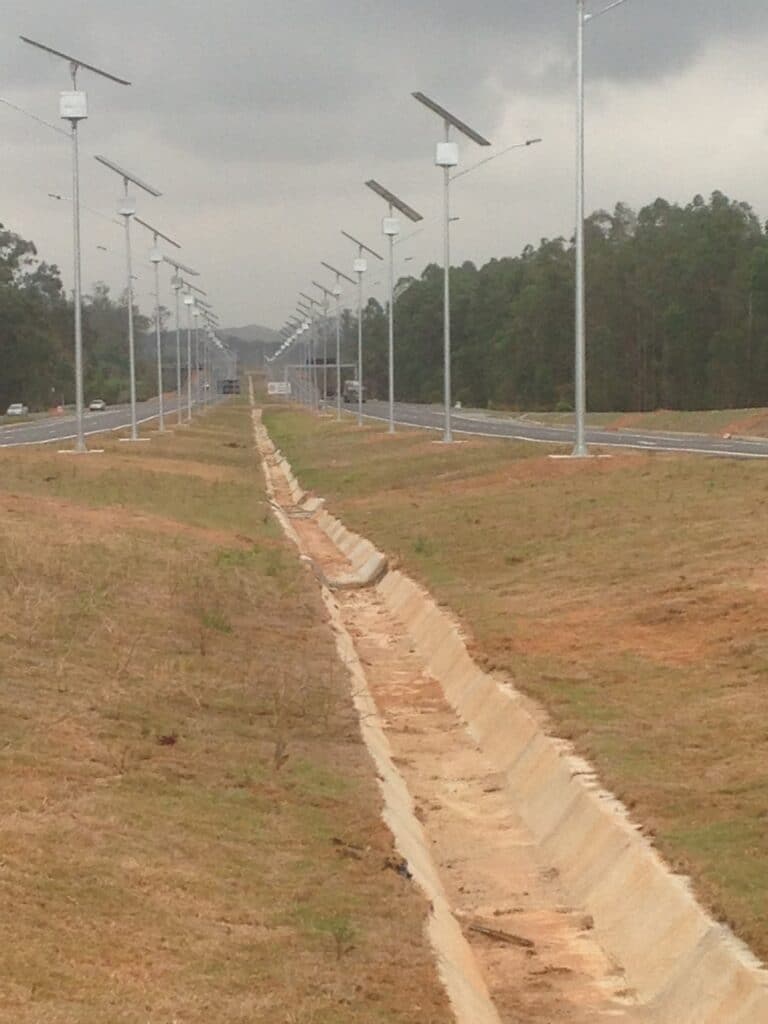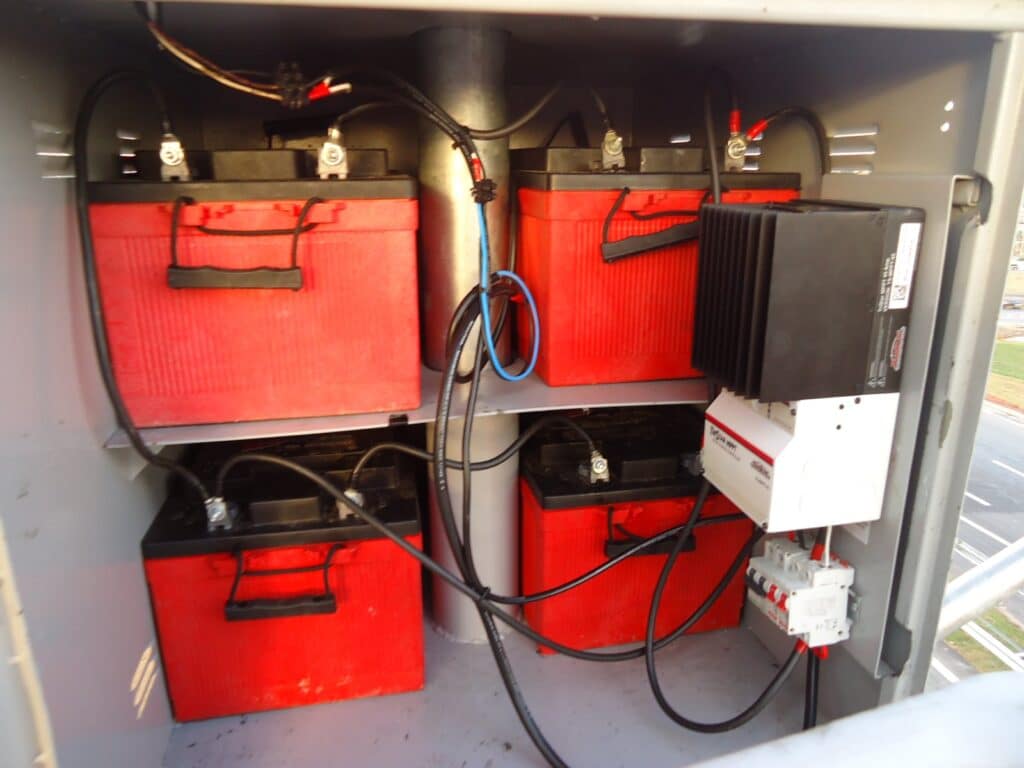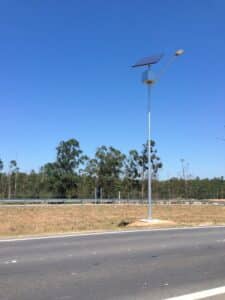Summary
- Largest solar highway illumination project in Brazil
- Project will light 73 KM of highway along the Arco Metropolitano
- Morningstar’s TriStar MPPT-45 critical component of self-contained
energy storage system
Situation

One of the most strategic highway projects in Brazil, the Arco Metropolitano diverts commercial traffic out of the congested roads of Rio de Janeiro city, while serving as a lifeline to the less developed regions of rural Rio de Janeiro state. Commercial trucks transporting goods throughout the state have reduced transportation time by half, and development along the highway has brought economic growth to regions previously cut off from the city center.
Project

In response, the state government of Rio de Janeiro facilitated the largest solar highway project ever attempted in Brazil, and one of the largest in the world, a project locals called the Solar Superhighway.
The project called for more than 4,300 free-standing streetlights to be installed along a 73 KM stretch of the highway connecting to Itagui, a critical
port entry.
Solution

Japanese electronics firm Kyocera Solar, Inc partnered with a Brazilian engineering company Soter to develop and install a street lighting system capable of producing 2.8 GWh of solar energy per year without burdening the already fragile local energy grid.
The solution, a Kyocera streetlight kit, creates a stand-alone streetlight independent of the local grid, or other supplementary energy sources. To accomplish this, the system depends on a lead battery system connected to a charge controller, capable of storing up to three days worth of energy. The Morningstar TriStar MPPT-45 serves as a critical component for this single-source energy solution.
Each streetlight kit, capable of producing more than 2.8 GWh of solar energy per year, consists of:
- Morningstar TriStar MPPT-45
- Four 240 Ah/12 Vcc batteries
- 150 W LED lamp
- Three solar modules
- One photocell
- One pole with mounting structures
To operate, the batteries are connected to the TriStar MPPT-45 and store solar energy during the day. Once the photocell detects that light levels have fallen and LED lamps are needed, the lights automatically switch on. The system is capable of storing enough energy to power a streetlight for up to three days without sunlight.
“The success of high-profile projects such as this one will position Brazil as a global leader in solar and renewable energy. With so much depending on this project, we need components with exceptional quality and reliability. Morningstar products are best in class and the MPPT-45 was the clear choice when choosing a charge controller for this project,” said Sergio Beninca, President of Kyocera Solar Brazil
Morningstar Corporation features examples of our products used by our customers across a wide variety of environments and systems, to highlight their flexibility, performance and dependability. Installation best practices and preferences can vary across diverse regions and applications, and the examples shown here are for general interest and not intended as a guide. Always consult local codes and refer to product installation manuals for correct requirements. Learn more about our 45 amp solar charge controllers, similar to the one used in this project.
